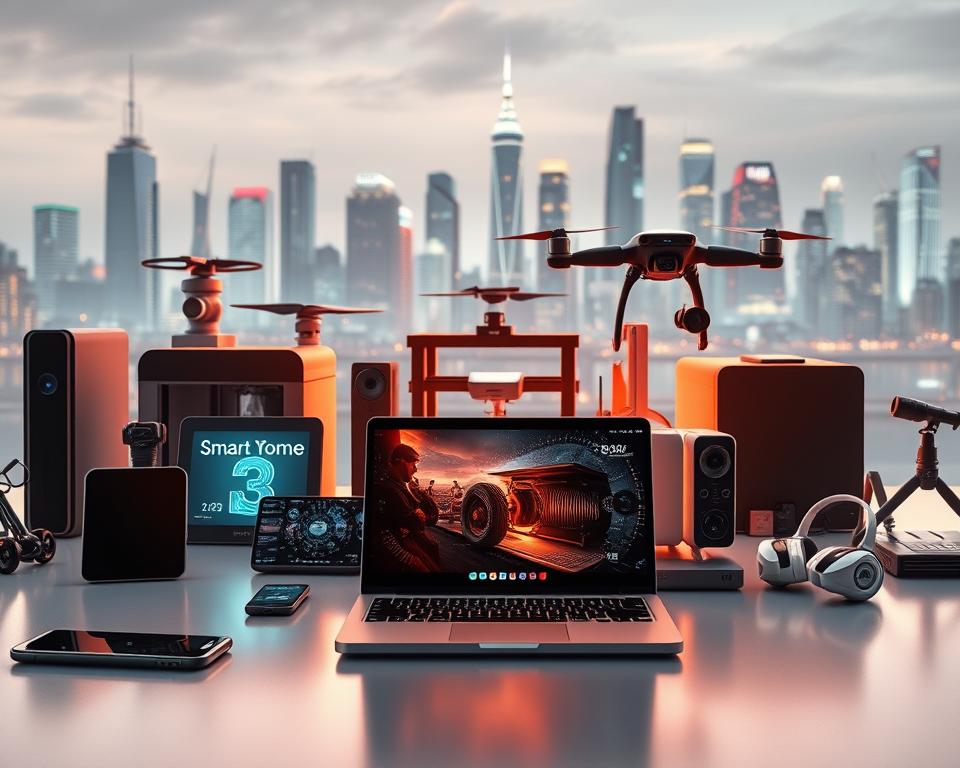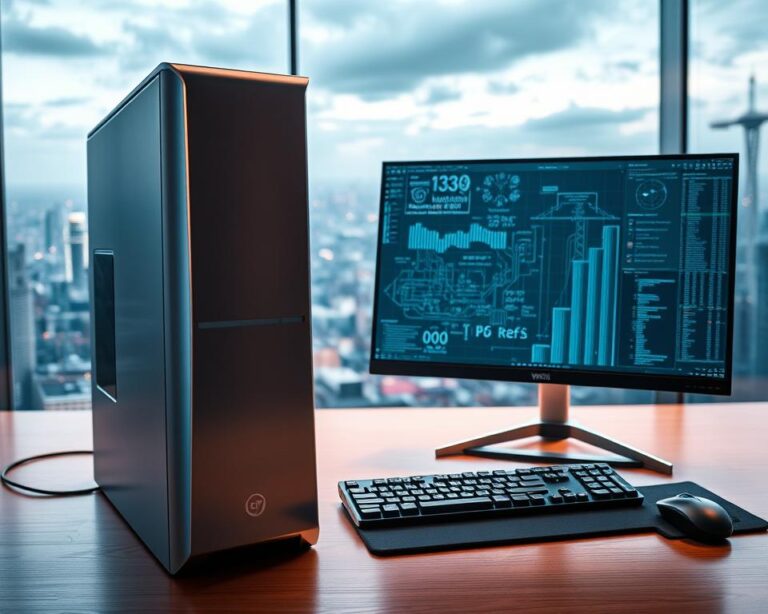
7 Types of Technology You Should Know About
Did you know that over 4.9 billion people around the globe are using the internet as of 2023? This staggering statistic reflects not only the accessibility of technology but also its significant impact on every aspect of our lives. In this article, we will explore what are 7 types of technology that are essential for understanding our ever-evolving world. From seamless communication to groundbreaking innovations in medical technology, these technology categories are shaping the way we live, work, and connect. Grasping these different types of technology is important for anyone looking to enhance their knowledge and adaptability in today’s fast-paced environment.

Key Takeaways
- Technology is integral to modern life, affecting various sectors.
- Understanding the types of technology can boost personal and professional growth.
- Categories of technology include information, communication, medical, energy, and consumer tech.
- Staying updated with technological advancements aids in innovation.
- Each type of technology plays a unique role in shaping society.
Introduction to Technology
Technology has been a fundamental aspect of humanity, influencing daily life and reshaping societies. The introduction to technology begins with an exploration of its evolution. From the simplest stone tools to today’s advanced digital systems, this evolution marks significant progress. Each step in technology has introduced novel methods of enhancing productivity, communication, and overall quality of life.
The significance of technology extends beyond mere convenience. It plays a crucial role in economic development, education, and healthcare. Milestones like the invention of the wheel, the printing press, and the rise of the internet serve as critical turning points in history. They illustrate how technology can foster change, bridging gaps between cultures and enhancing global connections.
As society continues to advance, understanding these technological trends becomes essential. The adaptation and integration of new technologies into various sectors reflect the ongoing journey of innovation, making the introduction to technology a vital topic for everyone.

| Milestone | Year | Impact |
|---|---|---|
| The Wheel | 3500 BC | Transformed transport and agriculture |
| Printing Press | 1440 | Revolutionized information sharing |
| The Internet | 1990 | Connected the world in real-time |
What are 7 types of technology?
In the rapidly evolving landscape of modern society, understanding what are 7 types of technology becomes essential. These key categories play a significant role in shaping how we interact, conduct business, and improve our quality of life. Knowledge of these types fosters an appreciation for their impact, demonstrating the importance of technology in various aspects of our existence.
Importance of Understanding Technology
Recognizing the importance of technology can empower individuals and organizations alike. By grasping the nuances of different technology categories, people can make informed decisions that enhance productivity and innovation. Awareness of how these technologies influence industries, from healthcare to finance, underscores the necessity for continuous learning and adaptation.
Overview of Technology Categories
A broad understanding of technology categories provides insight into their diverse applications and significance. Some key types include:
- Information Technology
- Communication Technology
- Medical Technology
- Transportation Technology
- Energy Technology
- Manufacturing Technology
- Consumer Technology
Each of these categories encompasses various tools and systems designed to solve problems and enhance efficiency. Delving into their specifics can illuminate their relevance in everyday life.

Information Technology
Information technology plays a pivotal role in shaping modern business landscapes. This field encompasses various IT components that are vital for efficient operations. Understanding how these elements function together allows organizations to leverage technology effectively. Elements such as hardware, software, networks, and data management systems work in tandem to enhance productivity and streamline processes.
Key Components of Information Technology
Several key IT components serve as the backbone of information technology. These components include:
- Hardware: Physical devices such as computers and servers.
- Software: Applications and operating systems that enable functionality.
- Networks: Systems that connect devices, facilitating communication.
- Data Management Systems: Frameworks for storing and retrieving data securely.
Each component significantly contributes to the overall efficiency of business operations, ensuring that companies can respond rapidly to market demands.
Impact of Information Technology on Business
The impact of IT on business is substantial. Innovations such as e-commerce platforms, cloud computing, and enhanced cybersecurity measures have transformed how companies operate. E-commerce allows businesses to reach a broader audience without geographical restrictions. Cloud computing offers flexible storage solutions and facilitates collaboration among teams. Additionally, cybersecurity challenges necessitate robust protection mechanisms, ensuring that sensitive data remains secure.
For instance, companies like Amazon and Google exemplify the successful application of information technology. These organizations harness IT components to drive growth, improve customer service, and maintain competitive advantages in rapidly evolving markets.

Communication Technology
Communication technology encompasses a broad spectrum of tools and techniques that facilitate the exchange of information. The evolution of communication has radically transformed how individuals and businesses interact. From the days of smoke signals and handwritten letters to today’s emerging digital platforms, the advancement of communication technology has led to more immediate and varied ways to connect.
Evolution of Communication Technologies
Historically, communication tools have advanced remarkably. Traditional methods like telegraphs and landline telephones gave way to mobile phones and the Internet. The introduction of social media and messaging apps has revolutionized how we share information. The increasing accessibility of communication technology has enabled real-time discussions, transcending geographical barriers and fostering global relationships.
Benefits of Modern Communication Tools
Modern communication tools offer numerous advantages, enhancing connectivity and collaboration. Businesses benefit from video conferencing software, project management platforms, and instant messaging services, which streamline operations and improve productivity. Individuals enjoy greater access to information, allowing for seamless interaction with friends and family, regardless of distance. Overall, the benefits of modern communication tools promote efficiency and engagement in both personal and professional settings.

Medical Technology
Medical technology encompasses a wide range of devices, software, and systems aimed at enhancing healthcare delivery. Continuous advancements in healthcare are transforming patient care technology, making it more efficient and effective. Recent innovations are reshaping the landscape, bridging gaps in traditional medical practices, and paving the way for better health outcomes.
Advancements in Medical Technology
Significant advancements in medical technology include the rise of telemedicine, which allows for remote consultations and increased access to healthcare professionals. Robotic surgeries are enhancing precision during medical procedures, contributing to quicker recovery times for patients. Wearable health monitors are also gaining popularity, enabling individuals to track their vital signs proactively. These technologies exemplify the shift towards more patient-centered care.
How Medical Tech is Improving Patient Care
The integration of artificial intelligence and machine learning in medical technology offers tremendous potential for improving patient care. These tools assist healthcare providers in making informed decisions, optimizing treatment plans, and personalizing patient interactions. Hospitals are increasingly adopting advanced imaging technologies that enhance diagnosis accuracy, leading to timely treatments and better overall patient experiences.
| Type of Medical Technology | Impact on Patient Care |
|---|---|
| Telemedicine | Improves access to healthcare services, especially in remote areas |
| Robotic Surgery | Enhances precision, reduces recovery time, and minimizes complications |
| Wearable Health Monitors | Enables proactive health management and early detection of issues |
| AI in Imaging | Boosts diagnostic accuracy and assists in treatment planning |
Transportation Technology
Transportation technology plays a vital role in facilitating the movement of people and goods globally. With recent innovations in transportation, we witness significant advancements that enhance efficiency and sustainability within transport systems. Electric vehicles have emerged as a beacon of environmental consciousness, reducing carbon footprints and improving air quality in urban areas.
Another remarkable development is autonomous driving technology, which holds the potential to revolutionize how we navigate roads. By integrating artificial intelligence, these vehicles aim to minimize accidents and traffic congestion, contributing to safer transport systems.
Public transportation has also benefited from these innovations. Cities are increasingly investing in smart transit solutions that provide real-time tracking and improved connectivity. These enhancements not only streamline operations but also encourage more people to utilize public transit, reducing overall emissions.
The continuous evolution of transportation technology reflects a commitment to safety and efficiency in logistics. As systems become more interconnected, the prospect of seamless transportation networks emerges, marking a significant leap forward for both urban environments and rural communities.
Energy Technology
Energy technology plays a crucial role in our modern world, focusing on the generation, distribution, and consumption of energy. With the planet facing pressing climate challenges, innovations in this field become essential. The spotlight shines on renewable energy, featuring groundbreaking advancements that address sustainability concerns and boost energy efficiency.
Renewable Energy Innovations
Recent developments in renewable energy showcase how solar, wind, and hydroelectric power are revolutionizing energy consumption. Solar panels have become more efficient and affordable, making them accessible for residential and commercial use. Wind turbines harness greater energy from lower wind speeds than before. Hydroelectric power plants are adopting advanced technology to minimize ecological impacts while enhancing output. These innovations signal a shift towards sustainable energy sources, crucial in reducing carbon emissions and combating climate change.
The Future of Energy Technology
Looking ahead, the future of energy innovations promises even more transformative changes. Smart grids are being developed to optimize energy distribution, improving reliability and efficiency. Energy storage solutions, such as advanced batteries and pumped hydro storage, allow for better management of energy supply and demand. Investments in research and development, alongside policy reforms, will shape this evolving landscape. Support for sustainable practices will propel society towards a greener future.
Manufacturing Technology
Manufacturing technology encompasses the tools and machinery vital for producing goods efficiently. Recent production innovations have transformed traditional practices, leading to notable advancements such as 3D printing and automation. Companies like Siemens and GE have harnessed these technologies, optimizing their processes for better efficiency and reduced costs.
One standout aspect of industrial technology is Computer Numerical Control (CNC) machining. This technique enhances precision in manufacturing, enabling businesses to customize products without compromising on quality. Such flexibility has given rise to tailored solutions that meet consumer needs more effectively.
The advent of Industry 4.0 signifies a pivotal shift in manufacturing technology. Interconnected systems allow for real-time data sharing, resulting in smarter factories. This evolution not only increases productivity but inevitably impacts the workforce as roles evolve to embrace these sophisticated technologies.
| Technology Type | Advantages | Impact on Production |
|---|---|---|
| 3D Printing | Rapid prototyping, minimal waste | Shorter production cycles |
| CNC Machining | High accuracy, repeatability | Lower defect rates |
| Automation | Reduced labor costs, increased speed | Higher output levels |
Consumer Technology
Consumer technology encompasses a wide range of devices designed to simplify everyday tasks and enhance our daily lives. These devices, including smartphones, tablets, and smart home gadgets, have revolutionized how we interact with the world around us. Understanding their features and capabilities offers insights into the significant impact of technology on life.
Everyday Tech Gadgets
Everyday gadgets have become integral to our routines. Popular items such as the Apple iPhone, Samsung Galaxy, and Amazon Echo exemplify advancements in consumer technology. These gadgets not only allow for seamless communication but also facilitate household management through voice-activated commands. Features like health tracking in wearables provide users with valuable insights into their well-being.
Impact of Consumer Technology on Daily Life
The impact of consumer technology on daily life is profound. Innovations in smart home devices create environments tailored to individual preferences, enhancing comfort and energy efficiency. Smart refrigerators, for instance, can track food inventory while sending alerts when supplies run low. This level of convenience illustrates how technology indeed transforms mundane tasks into efficient experiences.
Incorporating consumer technology into everyday routines fosters connectivity and productivity, allowing users to access information and control their environments effortlessly. Embracing these gadgets can lead to a more streamlined, enjoyable lifestyle.
| Gadget | Functionality | Benefit |
|---|---|---|
| Smartphone | Communication and apps | Increased connectivity |
| Smart Speaker | Voice assistance and music playback | Hands-free operation |
| Wearable Fitness Tracker | Health tracking and notifications | Improved health awareness |
| Smart Thermostat | Temperature control | Energy savings |
| Smart Light Bulbs | Remote access and automation | Customizable ambiance |
Robotics and Automation Technology
The significant advancements in robotics technology have transformed industrial settings around the world. Companies increasingly adopt industrial automation to enhance productivity and maintain a competitive edge. This shift is marked by the integration of robotics technology into various manufacturing processes, which enables machines to carry out tasks with high precision and consistency.
Industries such as automotive and electronics manufacturing embrace these innovations to optimize workflow. Research indicates that robotic systems improve accuracy and reduce error rates in tasks ranging from assembly to quality control.
The Rise of Industrial Automation
Industrial automation has gained momentum due to several factors influencing the manufacturing landscape:
- Enhanced Efficiency: Automation trends indicate reduced production times and increased output rates, allowing businesses to meet growing market demands.
- Cost Reduction: By implementing robotics technology, companies can significantly lower labor costs and reduce waste, leading to an overall increase in profitability.
- Quality Improvement: Automated systems enhance quality assurance, as they consistently perform tasks without the variability that comes from human labor.
- Workforce Safety: Incorporating robots into potentially hazardous environments minimizes the risk for human workers, promoting a safer workplace.
The adoption of robotics technology is reshaping the future of work. As different sectors look to automate processes, understanding these automation trends becomes vital for companies aiming to thrive in a rapidly evolving economic landscape.
Artificial Intelligence and Machine Learning
Artificial intelligence (AI) has transformed various sectors by simulating human thought processes to enhance efficiency and productivity. Machine learning applications play a crucial role in this evolution, allowing systems to learn from data, improve performance, and make informed decisions.
Applications of AI in Various Sectors
AI’s versatility extends across numerous industries, bringing innovative solutions that streamline operations and provide valuable insights. In healthcare, AI assists in diagnosing diseases, predicting patient outcomes, and personalizing treatment plans. Financial services leverage AI for fraud detection, risk assessment, and algorithmic trading, ensuring higher security and profitability. Retailers utilize machine learning applications for inventory management, personalized marketing, and enhancing customer experiences. These technological advancements significantly influence productivity and growth, showcasing AI’s potential.
Future Trends in AI Technology
The trajectory of artificial intelligence is set to gather momentum with upcoming trends that promise to reshape various sectors. Natural language processing aims to create more intuitive interactions between machines and humans, enhancing user experience. Autonomous systems are another frontier, with advancements in self-driving technology poised to change transportation and logistics. Ethical considerations will emerge as crucial discussions around AI integration into daily life continue. Addressing biases in algorithms and ensuring transparency will remain paramount as society embraces future trends in AI.
Conclusion
In summarizing the importance of the seven types of technology discussed in this article, it is evident that each category plays a significant role in shaping our daily lives and advancing society. From information technology that drives business efficiency to medical technology that enhances patient care, the variety of technological advancements impacts every aspect of our existence. This conclusion on technology types highlights not just their individual benefits, but also their collective contribution to improving quality of life.
As we navigate an increasingly interconnected world, staying informed about these innovations is crucial. The summary of technology presented here emphasizes the continuous evolution and adaptation necessary in both personal and professional contexts. Recognizing how these technological advancements can be applied can make all the difference in achieving success in today’s competitive landscape.
Ultimately, embracing the knowledge of these seven technology types encourages an awareness that fosters growth and understanding. As technology continues to evolve, so too should our engagement with it, ensuring we remain equipped to leverage its potential to our advantage.



